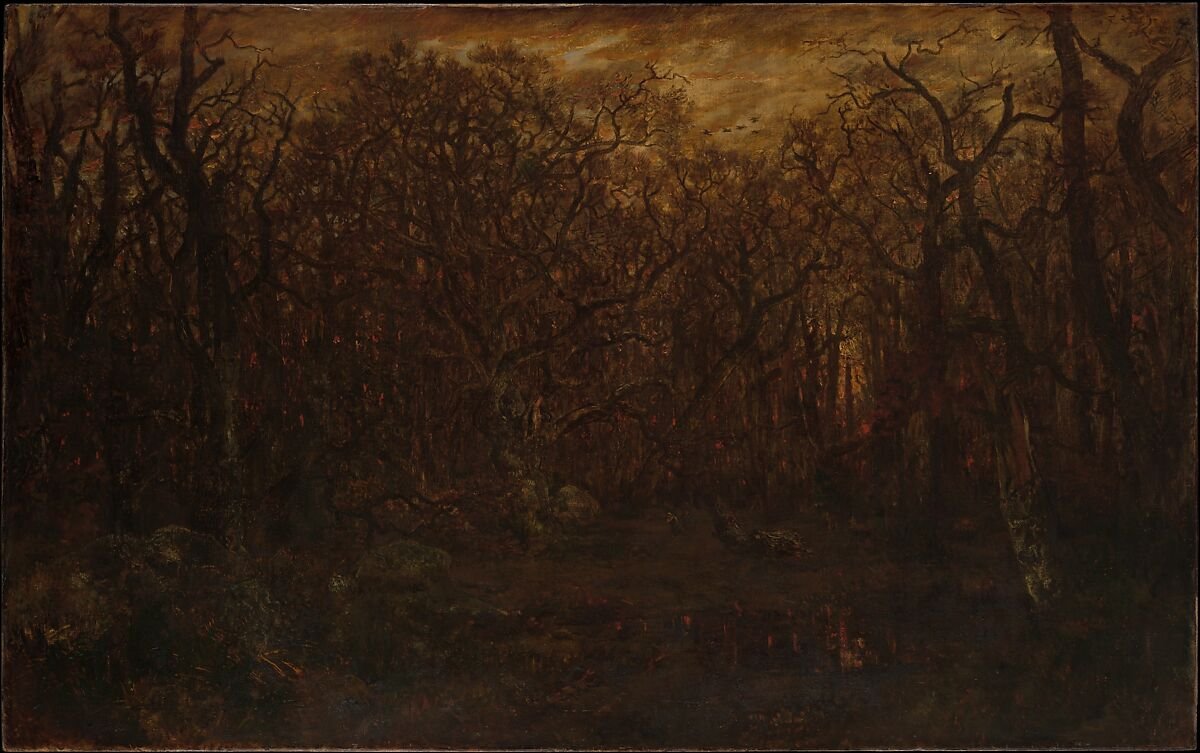
Rousseau's "The Forest in Winter at Sunset," a mid-19th-century work, is characteristic of the Barbizon School and exemplifies the Romantic fascination with nature. The painting portrays a serene winter landscape with the fading light of the sunset. Though Rousseau worked on it for a lot of years, ultimately, the painting remained unfinished before his death. Rousseau captures the stillness and tranquility of winter, using muted colors and a meticulous rendering of trees to evoke a sense of quiet beauty. This theme of how nature can literally and metaphorically change its colors with the seasons is expressed in Louis Agassiz's "The Ripening of Leaves'' - “...one must see it (autumnal foliage) in the unbroken forest, covering the country with rainbow hues as far as the eye can reach, in order to appreciate fully its wonderful beauty.” It presents Agassiz’s unique perspective that intertwines art and science. As a renowned biologist, Agassiz brings a scientific eye to his writing, depicting the intricate details of leaves as they undergo the process of ripening. The text serves not only as an aesthetic creation but also as a botanical study, reflecting Agassiz's dual role as a writer and scientist.
While Rousseau's work leans towards the emotional and atmospheric aspects of nature, Agassiz's text is a blend of art and scientific observation, showcasing the intersection of aesthetics and empirical study in the natural world. Ultimately, both pinpoint nature as the ultimate creator of beauty, with the pallets of the seasons.